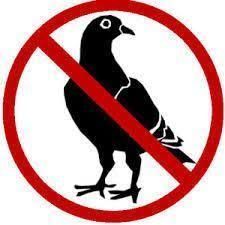PIGEONS
PIGEON CONTROL: HOW TO GET RID OF PIGEONS
WHY ARE PIGEONS SO COMMON?
Pigeons are a common sight in cities around the world. It’s easy to identify these gray-colored birds from the ring of iridescent pink and green feathers around their necks. Pigeon’s average life span is 3-5 years in the wild, but their history of living around humans goes back much farther. Historical evidence suggests that pigeons were domesticated as early as 4500 BC, likely making them the first birds humans tamed.
Thousands of years of domestication have made pigeons very comfortable living around humans. Pigeons also like cities because they are attracted to the tall buildings that resemble the cliffs that are their natural habitat. Urban areas also provide an easily available source of food, either from trash or from people who like to feed birds.
WHY PIGEON PEST CONTROL IS IMPORTANT
Given how much pigeons are attracted to areas with a lot of people, they are bound to cause problems. Pigeons can cause a number of problems for humans, including:
Pigeon feces can contain diseases such as cryptococcosis, histoplasmosis, and psittacosis
that can make people sick
It can cost tens of thousands of dollars
to safely clean up built up pigeon feces
They can carry other pests like fleas, ticks, lice, and mites that can themselves carry other diseases or make people sick
Contamination from bird droppings can result in government citations and fines
that can shut down businesses.
Pigeon droppings can also become a liability risk. The droppings can make surfaces slick and lead to slip and fall incidents.
Their droppings also highly acidic and have a corrosive effect on buildings and other structures. In extreme cases they have even been known to eat through steel and cause structural collapse.
Pigeons naturally like to build their nests in small niches and crevices of cliffs. In an urban environment, this can translate into pigeons building nests in building air vents and chimneys, which can become a fire hazard.
The Real Cost of Uncontrolled Bird Infestations
Ignoring a bird infestation is more than a waste of money and time. It is also an occupational hazard.
It used to be that bird infestations were frustrating simply because they forced facility managers to waste money cleaning up after a renewable source of mess. Today, we have to deal with the threat of lawsuits, as well as the day-to-day expense of bird infestation problems.
Birds do not just leave behind visually unappealing droppings; they create dangerous environments. Studies show that more than 60 diseases can be transferred from birds to human beings, sometimes with fatal results. The build-up of bird droppings opens up the potential for slip-and-fall lawsuits, not to mention every facility manager’s nightmare: OSHA, the USDA, local health boards, or other governmental organizations citing and fining your facility or shutting it down because of bird infestation or bird mess.
As hard as it is to admit, in a citation situation, OSHA might be doing you a favor. Bad press and fines aside, if facilities are permitted to continue operating while contaminated by bird droppings, there is a chance someone entering your facility could contract a serious disease and name you responsible. Worse yet, the affected person might be you or one of your co-workers.
While most people have heard of avian flu or West Nile virus, histoplasmosis and Cryptococcus have maintained a low profile despite the fact they have been popping up in the news as well. This low level of awareness keeps people from taking measures to protect themselves and leaves you responsible for protecting them.
In fact, CDC suggests that for areas known for or suspected of being contaminated by H. capsulatum (histoplasmosis)—areas “such as bird roosts, attics, or even entire buildings that contain accumulations of bat or bird manure”—signs should be posted warning of the health risk. These signs should include the name and telephone number of a contact person in case questions arise about the area. In some situations, to prevent unsuspecting or unprotected individuals from entering a contaminated area, fencing may need to be built around a property or locks put on certain doors.



